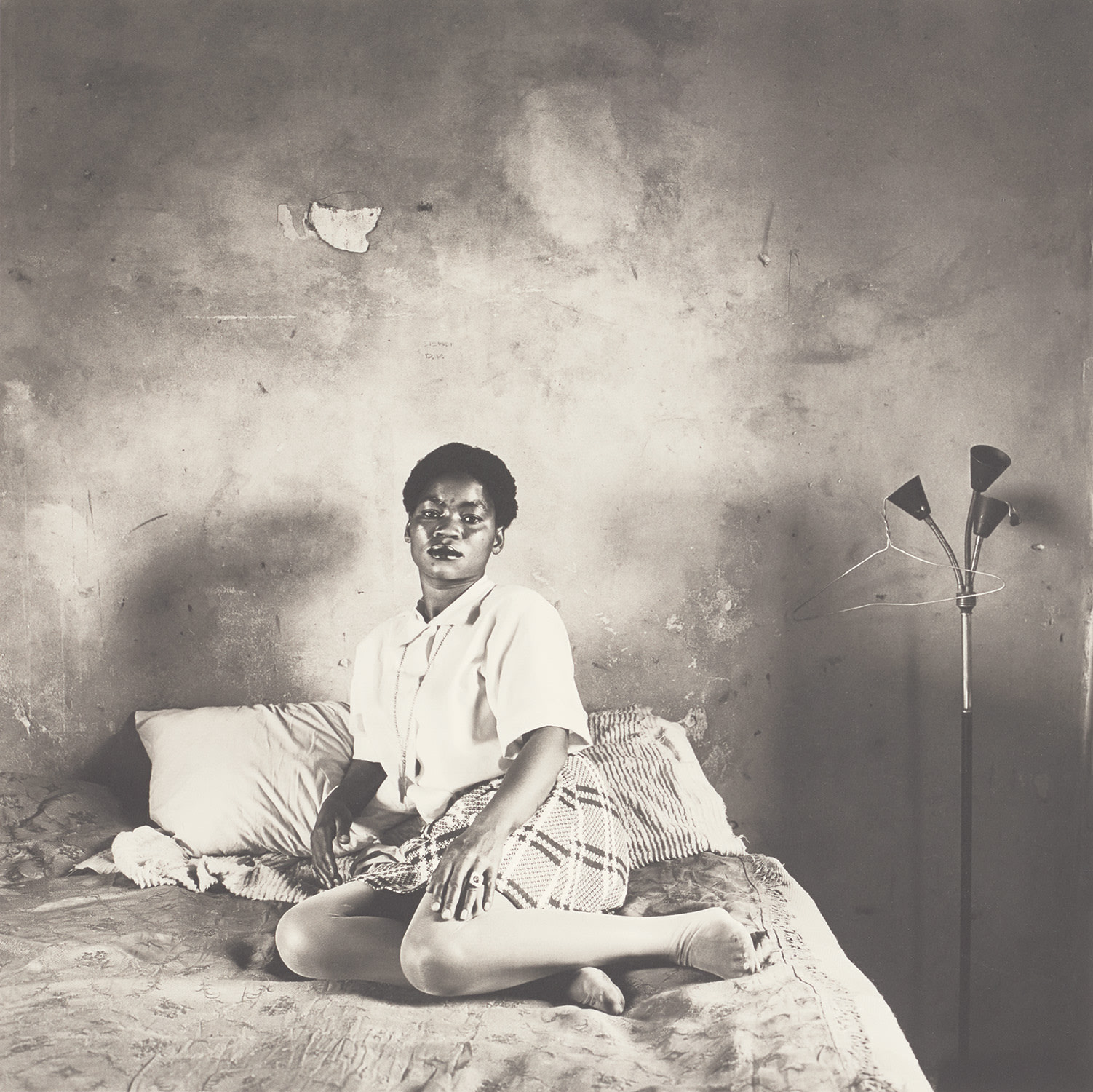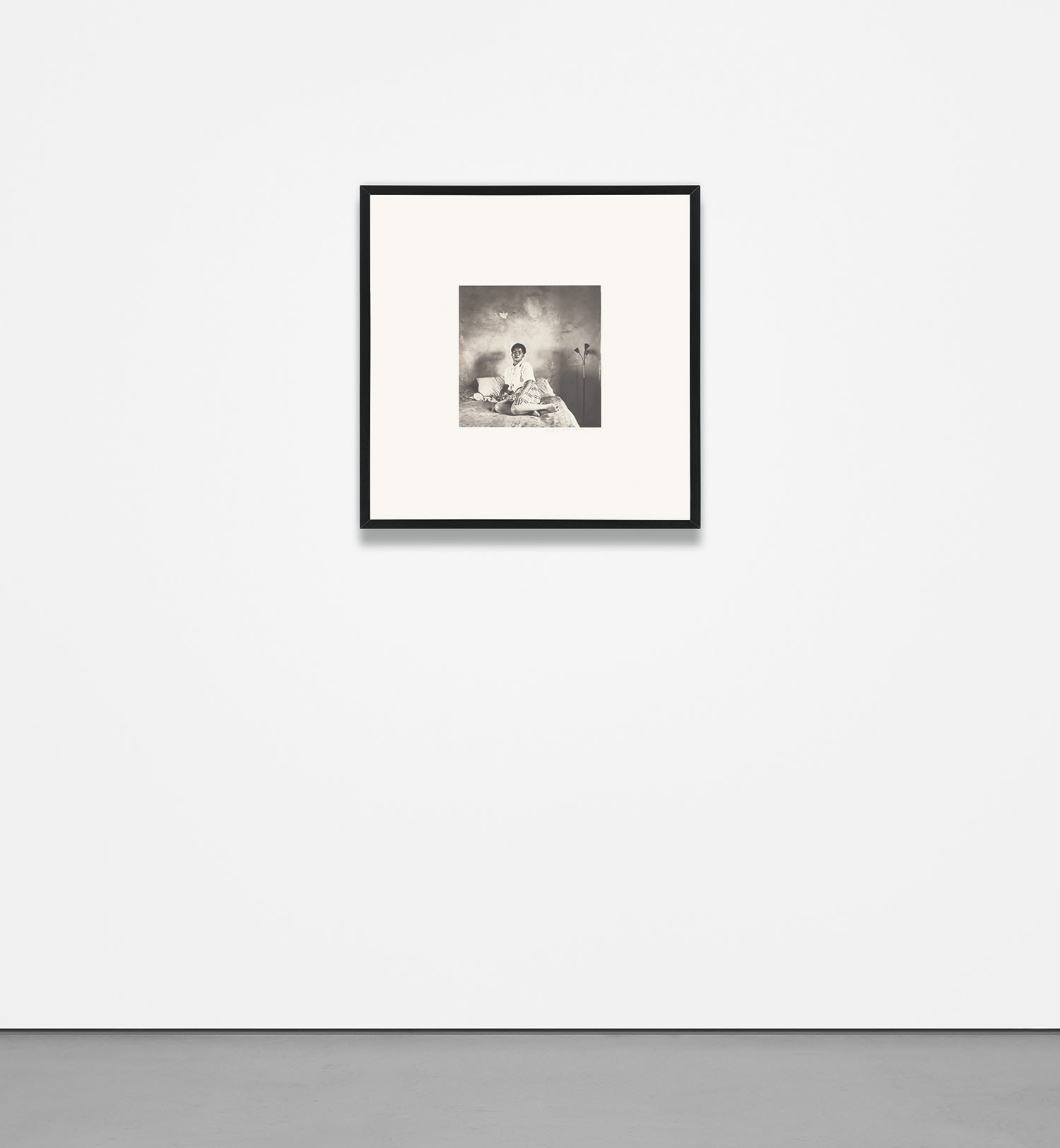



ULTIMATE
6
David Goldblatt
Miriam Diale in her bedroom, 5357 Orlando East, Soweto
18 October 1972
Platinum-palladium print, printed later.
Image: 36.7 x 36.7 cm (14 1/2 x 14 1/2 in.)
Sheet: 74.7 x 55.8 cm (29 3/8 x 21 7/8 in.)
Sheet: 74.7 x 55.8 cm (29 3/8 x 21 7/8 in.)
Signed, dated and annotated ‘P/P’ in pencil in the margin.
This work is PP from the sold-out edition of 4 + 1 AP + 1 PP.
This work is PP from the sold-out edition of 4 + 1 AP + 1 PP.